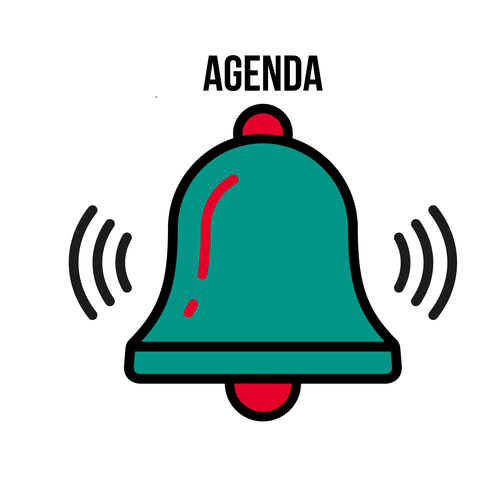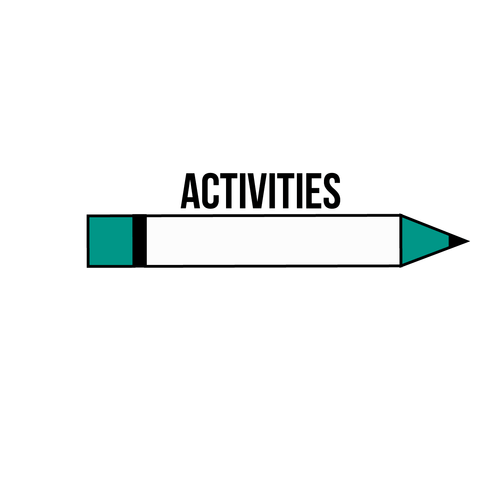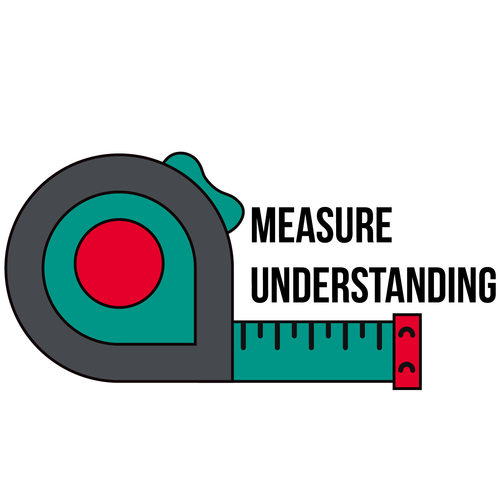3.9: Digestive Highway
- Page ID
- 14081
\( \newcommand{\vecs}[1]{\overset { \scriptstyle \rightharpoonup} {\mathbf{#1}} } \)
\( \newcommand{\vecd}[1]{\overset{-\!-\!\rightharpoonup}{\vphantom{a}\smash {#1}}} \)
\( \newcommand{\id}{\mathrm{id}}\) \( \newcommand{\Span}{\mathrm{span}}\)
( \newcommand{\kernel}{\mathrm{null}\,}\) \( \newcommand{\range}{\mathrm{range}\,}\)
\( \newcommand{\RealPart}{\mathrm{Re}}\) \( \newcommand{\ImaginaryPart}{\mathrm{Im}}\)
\( \newcommand{\Argument}{\mathrm{Arg}}\) \( \newcommand{\norm}[1]{\| #1 \|}\)
\( \newcommand{\inner}[2]{\langle #1, #2 \rangle}\)
\( \newcommand{\Span}{\mathrm{span}}\)
\( \newcommand{\id}{\mathrm{id}}\)
\( \newcommand{\Span}{\mathrm{span}}\)
\( \newcommand{\kernel}{\mathrm{null}\,}\)
\( \newcommand{\range}{\mathrm{range}\,}\)
\( \newcommand{\RealPart}{\mathrm{Re}}\)
\( \newcommand{\ImaginaryPart}{\mathrm{Im}}\)
\( \newcommand{\Argument}{\mathrm{Arg}}\)
\( \newcommand{\norm}[1]{\| #1 \|}\)
\( \newcommand{\inner}[2]{\langle #1, #2 \rangle}\)
\( \newcommand{\Span}{\mathrm{span}}\) \( \newcommand{\AA}{\unicode[.8,0]{x212B}}\)
\( \newcommand{\vectorA}[1]{\vec{#1}} % arrow\)
\( \newcommand{\vectorAt}[1]{\vec{\text{#1}}} % arrow\)
\( \newcommand{\vectorB}[1]{\overset { \scriptstyle \rightharpoonup} {\mathbf{#1}} } \)
\( \newcommand{\vectorC}[1]{\textbf{#1}} \)
\( \newcommand{\vectorD}[1]{\overrightarrow{#1}} \)
\( \newcommand{\vectorDt}[1]{\overrightarrow{\text{#1}}} \)
\( \newcommand{\vectE}[1]{\overset{-\!-\!\rightharpoonup}{\vphantom{a}\smash{\mathbf {#1}}}} \)
\( \newcommand{\vecs}[1]{\overset { \scriptstyle \rightharpoonup} {\mathbf{#1}} } \)
\( \newcommand{\vecd}[1]{\overset{-\!-\!\rightharpoonup}{\vphantom{a}\smash {#1}}} \)
\(\newcommand{\avec}{\mathbf a}\) \(\newcommand{\bvec}{\mathbf b}\) \(\newcommand{\cvec}{\mathbf c}\) \(\newcommand{\dvec}{\mathbf d}\) \(\newcommand{\dtil}{\widetilde{\mathbf d}}\) \(\newcommand{\evec}{\mathbf e}\) \(\newcommand{\fvec}{\mathbf f}\) \(\newcommand{\nvec}{\mathbf n}\) \(\newcommand{\pvec}{\mathbf p}\) \(\newcommand{\qvec}{\mathbf q}\) \(\newcommand{\svec}{\mathbf s}\) \(\newcommand{\tvec}{\mathbf t}\) \(\newcommand{\uvec}{\mathbf u}\) \(\newcommand{\vvec}{\mathbf v}\) \(\newcommand{\wvec}{\mathbf w}\) \(\newcommand{\xvec}{\mathbf x}\) \(\newcommand{\yvec}{\mathbf y}\) \(\newcommand{\zvec}{\mathbf z}\) \(\newcommand{\rvec}{\mathbf r}\) \(\newcommand{\mvec}{\mathbf m}\) \(\newcommand{\zerovec}{\mathbf 0}\) \(\newcommand{\onevec}{\mathbf 1}\) \(\newcommand{\real}{\mathbb R}\) \(\newcommand{\twovec}[2]{\left[\begin{array}{r}#1 \\ #2 \end{array}\right]}\) \(\newcommand{\ctwovec}[2]{\left[\begin{array}{c}#1 \\ #2 \end{array}\right]}\) \(\newcommand{\threevec}[3]{\left[\begin{array}{r}#1 \\ #2 \\ #3 \end{array}\right]}\) \(\newcommand{\cthreevec}[3]{\left[\begin{array}{c}#1 \\ #2 \\ #3 \end{array}\right]}\) \(\newcommand{\fourvec}[4]{\left[\begin{array}{r}#1 \\ #2 \\ #3 \\ #4 \end{array}\right]}\) \(\newcommand{\cfourvec}[4]{\left[\begin{array}{c}#1 \\ #2 \\ #3 \\ #4 \end{array}\right]}\) \(\newcommand{\fivevec}[5]{\left[\begin{array}{r}#1 \\ #2 \\ #3 \\ #4 \\ #5 \\ \end{array}\right]}\) \(\newcommand{\cfivevec}[5]{\left[\begin{array}{c}#1 \\ #2 \\ #3 \\ #4 \\ #5 \\ \end{array}\right]}\) \(\newcommand{\mattwo}[4]{\left[\begin{array}{rr}#1 \amp #2 \\ #3 \amp #4 \\ \end{array}\right]}\) \(\newcommand{\laspan}[1]{\text{Span}\{#1\}}\) \(\newcommand{\bcal}{\cal B}\) \(\newcommand{\ccal}{\cal C}\) \(\newcommand{\scal}{\cal S}\) \(\newcommand{\wcal}{\cal W}\) \(\newcommand{\ecal}{\cal E}\) \(\newcommand{\coords}[2]{\left\{#1\right\}_{#2}}\) \(\newcommand{\gray}[1]{\color{gray}{#1}}\) \(\newcommand{\lgray}[1]{\color{lightgray}{#1}}\) \(\newcommand{\rank}{\operatorname{rank}}\) \(\newcommand{\row}{\text{Row}}\) \(\newcommand{\col}{\text{Col}}\) \(\renewcommand{\row}{\text{Row}}\) \(\newcommand{\nul}{\text{Nul}}\) \(\newcommand{\var}{\text{Var}}\) \(\newcommand{\corr}{\text{corr}}\) \(\newcommand{\len}[1]{\left|#1\right|}\) \(\newcommand{\bbar}{\overline{\bvec}}\) \(\newcommand{\bhat}{\widehat{\bvec}}\) \(\newcommand{\bperp}{\bvec^\perp}\) \(\newcommand{\xhat}{\widehat{\xvec}}\) \(\newcommand{\vhat}{\widehat{\vvec}}\) \(\newcommand{\uhat}{\widehat{\uvec}}\) \(\newcommand{\what}{\widehat{\wvec}}\) \(\newcommand{\Sighat}{\widehat{\Sigma}}\) \(\newcommand{\lt}{<}\) \(\newcommand{\gt}{>}\) \(\newcommand{\amp}{&}\) \(\definecolor{fillinmathshade}{gray}{0.9}\)
National Health Education Standards (NHES)
- 1.12.5 Predict how healthy behaviors, such as consuming various foods, affects health status.
- 7.12.2 Demonstrate how a variety of healthy behaviors maintain or improve the health of self and others.
Wellness Guidelines
- Increase fruit and vegetable consumption

- Instruction: In a group or think-pair-share format, have participants discuss following questions. Acknowledge those who have progressed towards their goal(s) and encourage anyone who wants to change or modify their goal to get 1:1 support.
- Share: Let’s discuss our SMART Goals.
- How is it going with your current SMART goal?
- What are some ways you can improve progress towards your goal? (Grows)
- What are some ways you are doing well with progress towards your goal? (Glows)
GUIDELINE: Increase Fruit and Vegetable Consumption
- Share: What guideline do you think is related to today’s lesson? Who has a SMART Goal related to this guideline?
- Instruction: Select one activity.
- Guideline Popcorn: The group lists all 8 guidelines rapidly in popcorn format.
- Guideline Charades: Divide participants into groups and assign each a guideline. Each group has to silently act out the guideline for the rest to guess.
- Two Truths and One Lie:
- Truth 1: A healthy source of carbohydrates is carrots.
- Truth 2: Protein can come from both plant and animal sources.
- Lie: To be healthy, you cannot eat any fat.
- Share: Fat is essential for providing your body with energy and supporting other functions of your body. However, some fat sources are healthier than others. For example, walnuts, salmon, and avocado are healthy sources of fat. Also, eating vegetables and fruits are not just a good way to get more vitamins, minerals, and fiber, they are also healthy sources of carbohydrates for energy!
- Questions to discuss and/or journal:
- Do you notice whether certain foods can keep you fuller for longer periods of time? What foods are those?
- Compare how you might feel after eating whole grains vs. refined grains. What are some differences?

- How the digestive system functions to digest the various types of foods you eat, and what types of foods help your body function the best.

- Worksheets
- Slide presentation
- Container
- Orange juice
- A slice of whole grain bread
- A slice of white bread
- Saltine crackers
- Whole grain crackers
- Stocking
- Water
- Cup
- Re-sealable bag
- Banana (cut in half)
- Scissors
- Trash bag
- Paper towels
- Optional: Rope (around 5 feet)

[As defined by: USDA & HHS, 2015; USDA, n.d.; Merriam-Webster Dictionary, n.d.]
- Calorie: A unit commonly used to measure the energy content of foods and beverages as well as energy use by the body.
- Nutrient-dense Foods: Foods that provide vitamins, minerals, and other substances that contribute to adequate nutrient intakes or may have positive health effects, with little or no solid fats and added sugars, refined starches, and sodium.
- Empty Calories: Calories that are from solid fats and added sugars.
- Discretionary Calories: Calories left over in their daily allowance for “extras” that can be used on treats like solid fats, added sugars and alcohol since their recommended nutrient intakes have already been fulfilled.
- Digestion: The mechanical and chemical breaking down of food into smaller components, into a form that can be absorbed by the body.
- Antioxidants: Natural or man-made substances that may prevent or delay some types of cell damage, often found in vegetables and fruits.

- Do Now
- Not All Calories Are Created Equal
- Eat Whole to Keep Me, Full
- Journey through the Digestive Highway
- Exit Ticket

Do Now:
- Instruction:
- Have participants answer the following question on their worksheet or by sharing out loud.
- When did you last eat?
- What did you last eat?
- Is this food giving you fast energy or will it keep you full until your next meal or snack?
- Have participants answer the following question on their worksheet or by sharing out loud.
- Share:
- There are two (2) categories of foods: those that move quickly through your body and so you get hungry quickly after and those that are slowly digested so you stay fuller longer.
- What are some examples of quickly-digested foods?
- White bread/rice/crackers
- Chips, candy, and other junk food
- What are some examples of slowly-digested foods?
- Whole grain bread/rice/crackers
- Quinoa
- Nuts
- Peas and Beans
- Fruits
- Vegetables
- Lean poultry/meat and eggs
Good to Know: Not All Calories Are Created Equal
- Share:
- Let’s start with the concept of calories because our body needs calories to be able to function.
- A calorie is a unit commonly used to measure the energy content of foods and beverages as well as energy use by the body (USDA & HHS, 2015). Calories give your body energy like gasoline gives energy to a car.
- How we gain calories is by eating food! How many calories a person needs depends on their age, gender, height, weight, and activity level, but the average person needs about 2,000 calories.
- Nutrient-dense foods are foods that provide vitamins, minerals, and other substances that contribute to adequate nutrient intakes or may have positive health effects, with little or no solid fats and added sugars, refined starches, and sodium. Examples of nutrient-dense foods include vegetables, fruits, whole grains, seafood, eggs, beans and peas, unsalted nuts and seeds, fat-free and low-fat dairy products, and lean meats and poultry (USDA & HHS, 2015).
- When you eat nutrient-dense foods, you get more sustained energy and feel fuller for longer periods of time. Your body will also get important nutrients to help it function at its best.
- Meanwhile, junk foods (French fries, chips, candy, etc.) contain empty calories or calories that are from solid fats and added sugars (USDA, 2015).
- Share:
- You may use to think that a calorie is a calorie, but we have learned that your body needs more than just calories (or energy) to grow and thrive. Instead, it also needs many other nutrients, such as vitamins, fiber, etc.
- The quality of the foods that you eat have a direct impact on how your body and mind feel, and our health is based on our body’s ability to do its many jobs well and efficiently. For example, what we eat has to provide fuel for the cells and the brain, repair daily damage, and protect against future damage.
- The better fuel you give your body, the easier it will be for your body to function at its best. That’s why your food choices really matter!
- For instance, say you are going to eat a snack that has about 100 calories. You could choose to eat 100 calories of a candy bar. Or you could go for 100 calories of walnuts and berries.
- The candy bar is only giving you ultra-refined carbohydrate calories, and not much else.
- However, that handful of walnuts and fresh berries rate high in fiber, antioxidants, vitamins, and essential fatty acids. All in the same 100 calories! And the walnuts will keep you fuller longer than the fast sugar hit of the candy bar.
- You can make a similar comparison at any meal: a bowl of white rice versus a bowl of quinoa with green veggies and tofu. A piece of white bread with butter or a piece of sprouted whole wheat toast with almond butter. They both may take up similar space on a plate or bowl, but the second options will fill you up longer and give you more energy for longer periods of time.
- Share:
- So how should we go about choosing nutrient-dense foods? What should we look for when choosing foods?
- When we are looking for how nutrient-dense a food is, you should try to consider its helpfulness to your body in a range of categories: vitamins & minerals, antioxidants, fiber, probiotics, and essential fatty acids.
- Think of your daily energy need as a budget. You’d organize a real budget with “essentials” (things like rent and utilities) and “extras” (such as vacation and entertainment). In a daily calorie budget, the essentials are the minimum number of calories you need to meet your nutrient needs.
- We have a limited number of calories we’re supposed to consume each day (2,000), so we might as well make the most out of our calories and get the most benefits instead of wasting our calories on empty ones that don’t give us as many benefits.
- Foods that are high in sugar or have added sugar can use up a lot of our daily calories need to fuel our body. Therefore, try to choose low-fat and no-sugar-added foods to make good “nutrient buys” with your budget.
- Share:
- Depending on the foods you choose and the amount of physical activity you do each day, you may have discretionary calories, or calories left over in their daily allowance for “extras” that can be used on treats like solid fats, added sugars and alcohol since their recommended nutrient intakes have already been fulfilled (USDA, n.d.).
- A person’s discretionary calorie budget varies depending on how physically active they are and how many calories they need to consume to meet their daily nutrient requirements.
- Discretionary calories can be used to:
- Eat additional foods from a food group above your daily recommendation.
- Select a higher-calorie form of a food that’s higher in fat or contains added sugars (whole milk vs. skim or sweetened vs. unsweetened cereal).
- Add fats or sweeteners to the leanest versions of foods (for example, sauce, dressing and butter/margarine).
- Eat or drink items that are mostly fat, sugar or alcohol such as candy, cake, beer, wine or regular soda.
- Common sources of discretionary calories (in addition to added sugars) are fats, oils, and Fats are the most concentrated source of calories (American Heart Association, 2017).
- The American Heart Association recommends that no more than half of a person’s daily discretionary calorie allowance be spent on added sugars. So, spend them wisely!
Real World Relevance: Eat Whole to Keep Me Full
- Share:
- You might be asking yourself does my food choices really make a difference once it’s inside my body? Does it really matter if I choose to eat white bread over a whole grain? Let’s find out!
- Set Up:
- Prepare a bowl of orange juice. Have a piece of whole grain bread and a piece of white bread readily accessible.
- Instruction:
- Ask for two volunteers.
- Explain that the acidity of orange juice is close to that of our stomachs. Ask the entire group to share what they think will happen if a piece of whole grain bread is submerged into the bowl of orange juice. Then ask about a piece of white bread.
- Instruct one of the volunteers to take a whole grain piece of bread, fully submerge it in a bowl of orange juice, and immediately pull it out.
- The piece of whole grain bread should be completely wet, but it should remain intact.
- The volunteer can then throw this piece of bread away.
- Then, have a different volunteer fully submerge a piece of white bread in water and try to pull it out.
- The piece of white bread will disintegrate, and they will have trouble pulling the bread out of the water as a whole.
- Share:
- Why do you think that the whole grain bread stays intact, while the white bread disintegrates?
- Due to the higher fiber content.
- This demonstration shows that refined grains break down more easily/quickly. This may give you a short burst of energy, but it won’t give your body sustained energy.
- Meanwhile, whole grains break down more gradually to give you sustained energy and keep you full for longer periods of time.
- Why do you think that the whole grain bread stays intact, while the white bread disintegrates?
Hands-On: Journey through the Digestive Highway
- Instruction:
- Pass out one saltine cracker and one whole grain cracker to each participant.
- Have participants observe the whole grain cracker. Ask them to share out what they noticed about its taste, smell, and look. Have them to chew it 50 times. Does the taste of the cracker change? If so, how does it change?
- Now, have participants do the same thing with the saltine cracker. Ask them to share out what they noticed about its taste, smell, and look. Have them to chew it 50 times. Does the taste of the cracker change? If so, how does it change?
- Share:
- Did any of you wonder what happens inside your body after you eat those two crackers? Let’s find out how digestion works inside our bodies! Digestion is the mechanical and chemical breaking down of food into smaller components, into a form that can be absorbed by the body.
- Set Up:
- Prepare all the materials needed for the digestive highway demo: saltine and whole grain crackers, re-sealable bag, half a banana, scissors, trash can, stocking, and cup.
- Instruction:
- Step 1: Add both a saltine and a whole grain cracker to the re-sealable bag. Break-up crackers in the re-sealable bag (to represent chewing), pour a little water into the bag (saliva), and half a banana (digestive enzyme).
- Explain that the bag first represents the mouth (the first point of digestion), then once you add the banana (representing stomach enzymes), it represents the stomach.
- Note that the esophagus transfers food from the mouth to the stomach.
- Ask participants the following questions:
- Which cracker breaks down the fastest? Saltine cracker.
- Is it a good or bad thing? Do you think we want our food to go through our body quickly or slowly? Rather be slower to get sustained energy/feel fuller longer.
- Step 2: Close the bag while making sure there is no air left inside (air would represent gas).
- Step 3: Cut a slit in the corner of the bag. Pour contents into a stocking. Make sure the stocking is hanging over a trash can since it will leak.
- Explain that the liquid leaking out of the stocking represents the small intestine absorbing the nutrients from the food.
- Step 4: Cut a slit at the end of the stocking. Pour/squeeze the contents of the stocking into the cup.
- Explain that the cup represents the large intestine where water would be absorbed.
- Step 5: Poke a hole through the bottom of the cup and push contents out.
- Explain that this step represents waste being excreted from the body through the rectum.
- Step 6: With participants, discuss and reflect on digestion. Use a diagram of the digestive tract.
- Use a rope (around 5 feet long) to illustrate the length of the small intestine.
- Optional: Play this video on the digestive system for your group: youtu.be/Og5xAdC8EUI
- Step 1: Add both a saltine and a whole grain cracker to the re-sealable bag. Break-up crackers in the re-sealable bag (to represent chewing), pour a little water into the bag (saliva), and half a banana (digestive enzyme).

Exit Ticket:
- Instruction:
- Have participants write on their worksheet or share out loud the following question(s).
- What are three quickly digested foods that you commonly eat? How do you feel after eating them?
- What are three slowly digested foods that you commonly eat? How do you feel after eating them?
- What are some foods you will try eating to give you sustained energy throughout the day?
Bibliography
- American Heart Association. (2017). Sugar 101. Retrieved From: http://www.heart.org/HEARTORG/HealthyLiving/HealthyEating/Nutrition/Sugar-101_UCM_306024_Article.jsp#.WbBrRdMrLBJ
- Merriam-Webster Dictionary. (n.d.) Digestion. Retrieved From: https://www.merriam-webster.com/dictionary/digestion
- S. Department of Agriculture. (2015). Empty calories. Retrieved From: http://district.schoolnutritionandfitness.com/simplifiedculinaryservices/files/Wellness/What_Are_Empty_Calories_ChooseMyplate.pdf
- National Institutes of Health (n.d.) Antioxidants. https://nccih.nih.gov/health/antioxi...m#introduction
- S. Department of Agriculture. (n.d.). Discretionary calories. Retrieved From:health.gov/dietaryguidelines...scCalories.htm
- S. Department of Agriculture & U.S Department of Health and Human Services. (2015). Dietary Guidelines for Americans. Retrieved From: https://health.gov/dietaryguidelines...Guidelines.pdf

- TED-Ed. (2017). How your digestive system works – Emma Bryce. Retrieved From: youtu.be/Og5xAdC8EUI
This lesson was created in partnership with Albert Einstein College of Medicine Department of Epidemiology and Population Health with funding support by the National Institutes of Health NIDDK Grant R01DK097096.

